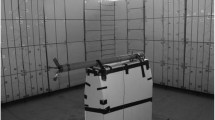Abstract
Military aircraft must often operate in hostile environments. A worrisome threat to aircraft are the high velocity fragments emanating from missile detonations near the aircraft. These fragments may impact and penetrate the aircraft, causing fires in the aircraft. The process by which a high-velocity impact event leads to fire ignition onboard military vehicles is complex, influenced by the interaction of heated debris fragments and fuel spurting from ruptured tanks. An assessment of the risk of such a fire begins with a complete characterization of the secondary threat resulting from the impact, including debris fragment sizes, states of motion, and thermal properties. In the aircraft survivability community, there is a need for an analytical tool to model this complete threat. This paper approaches the problem by describing an agent-based simulation model of the fragments in a debris cloud. An analytical/empirical impact fragmentation model is developed for incorporation into the simulation model, which determines fragment sizes and states of motion. Development and study of this proof-of-concept effort leads to a deeper understanding of such secondary threats and demonstrates the value of agent-based simulation models as an analytical tool. Empirical assessment of model results indicates the viability of the approach.










Similar content being viewed by others
References
Bestard JJ and Kocher B (2010). Ballistic impact flash characterization. 51st AIAA/ASME/ASCE/AHS/ASC Structures, Structural Dynamics, and Materials Conference. American Institute of Aeronautics and Astronautics: Orlando, FL, 12–15 April.
Bjorkman MD, Geiger JD and Wilhelm EE (1987). Space station integrated wall design and penetration damage control, task 3: Theoretical analysis of penetration mechanics. Final report, Contract no. NAS8-36426. Seattle, WA: Boeing Aerospace Corporation.
Bonabeau E (2002). Agent-based modeling: Methods and techniques for simulating human systems. Proceedings of the National Academy of Science 99 (Supplement 3): 7280–7287.
Bova M, Ciarallo FW and Hill R (2013). A prototype model of fire ignition from ballistic impacts. In: Krishnamurthy A and Chan WKV (eds). Proceedings of the 2013 Industrial and Systems Engineering Research Conference. Institute of Industrial Engineers: San Juan, PR, pp 2084–2091.
Buck MD, Kocher BD and Bestard JJ (2011). Thermal profile measurements for ballistic impact flashes. 52nd AIAA/ASME/ASCE/AHS/ASC Structures, Structural Dynamics, and Materials Conference. American Institute of Aeronautics and Astronautics: Denver, CO, 4–7 April.
Epstein JM and Axtell R (1996). Growing Artificial Societies: Social Science from the Bottom up. MIT Press: Cambridge, MA.
Grady DE and Kipp ME (1985). Geometric statistics and dynamic fragmentation. Journal of Applied Physics 58 (3): 1210–1222.
Grady DE and Winfree NA (2001). Impact fragmentation of high-velocity compact projectiles on thin plates: A physical and statistical characterization of fragment debris. International Journal of Impact Engineering 26 (1–10): 249–262.
Greer R and Hatz M (1992). KAPP-II user’s manual, version 1.1. Report, K92-17U(R). Colorado Springs, CO: Kaman Sciences Corporation.
Heath BL and Hill RR (2010). Some insights into the emergence of agent-based modeling. Journal of Simulation 4 (3): 163–169.
Hill RR and Gaupp MP (2006). Visualization tools for prescriptive analysis of a complex adaptive model of pilot retention. International Journal of Modelling and Simulation 26 (4): 1–7.
Joint Technical Coordinating Group for Munitions Effectiveness (1985). Penetration equations handbook for kinetic-energy penetrators. Report, 61 JTCG/ME-77-16. Washington DC: US Department of Defense.
Kipp ME, Grady DE and Swegle JW (1993). Numerical and experimental studies of high-velocity impact fragmentation. International Journal of Impact Engineering 14 (1-4): 427–438.
Macal CM and North MJ (2010). Tutorial on agent-based modeling and simulation. Journal of Simulation 4 (3): 151–162.
Morrill D (2013). Overestimating ballistic flash with biased linear regression. Master’s Thesis, Air Force Institute of Technology, Wright-Patterson Air Force Base, OH.
North MJ and Macal CM (2007). Managing Business Complexity: Discovering Strategic Solutions with Agent-Based Model and Simulation. Oxford University Press: New York, NY.
O’Connell PJ, Brickson ET, Miller ML and Cyphers DC (2010). Panel testing of materials representative of large commercial aircraft: Detailed test plan. Report, Wright-Patterson AFB: 96 TG/OL-AC.
Pyles JM and Disimile PJ (2011). Thermal model for ballistic impact flashes. 52nd AIAA/ASME/ASCE/AHS/ASC Structures, Structural Dynamics, and Materials Conference. American Institute of Aeronautics and Astronautics: Denver, CO, 4–7 April.
Schäfer FK (2006). An engineering fragmentation model for the impact of spherical projectiles on thin metallic plates. International Journal of Impact Engineering 33 (1–12): 745–762.
Schonberg WP (1995). A comparison of fragmentation models. International Journal of Impact Engineering 17 (4–6): 739–750.
Snow P (1992). KAPP—Kaman analytical penetration program. Report, K85-7U(R). Colorado Springs, CO: Kaman Sciences Corporation.
Talafuse T, Hill RR and Bestard JJ (2011). Characterization of ballistic impact flashes—Empirical model development. 52nd AIAA/ASME/ASCE/AHS/ASC Structures, Structural Dynamics, and Materials Conference. American Institute of Aeronautics and Astronautics: Denver, CO, 4–7 April.
Yatteau JD (1982). High velocity multiple plate penetration model. Report, NSWC TR 82-123. Denver, CO: Denver Research Institute.
Yatteau JD and Dickinson DL (1993). An engineering model to predict perforation damage to plates impacted by high velocity debris clouds. International Journal of Impact Engineering 14 (1–4): 831–842.
Acknowledgements
Matthew Bova was supported by the Southwestern Council for Higher Education (SOCHE) and Dr Frank Ciarallo by the Oak Ridge Institute for Science and Education (ORISE). The research was funded under the Science of Test Research Consortium within the Air Force Institute of Technology, Center for Operational Analyses. The authors would like to thank Mr Scott Wacker and the US Air Force Aerospace Survivability and Safety Operating Location (96 TG/OL-AC) at Wright-Patterson Air Force Base for providing the experimental data used in model development and the required subject matter expertise.
Author information
Authors and Affiliations
Corresponding author
Additional information
Disclaimer
The views and opinions expressed in this text are those of the authors. They do not necessarily correspond to those of the organizations by which they are employed.
Rights and permissions
About this article
Cite this article
Bova, M., Ciarallo, F. & Hill, R. Development of an agent-based model for the secondary threat resulting from a ballistic impact event. J Simulation 10, 24–35 (2016). https://doi.org/10.1057/jos.2015.1
Received:
Accepted:
Published:
Issue Date:
DOI: https://doi.org/10.1057/jos.2015.1




